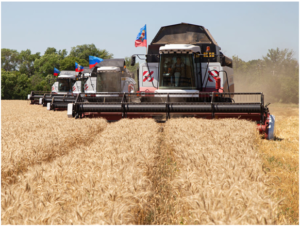
The Russia-Ukraine war will severely affect grain trade flows to Asia.
For grain markets in Asia, the Ukraine-Russia conflict could not have come at a better time. Its ramifications are going to reverberate throughout the food supply chain.
There are several key areas that can be impacted. Firstly the cost of grain. Liz Thang, Managing Editor Asia Sugar and Biofuels at S&P Global Platts told Asian Agribiz that the price of grain to Asia has set new records in the past days following the Ukraine crisis.
“The Platts assessment of corn was at USD 368/ton CFR North Asia for cargoes arriving May-June, a USD 15/ton jump in two days since the fighting started.”
A Rabobank report on the crisis, explained a best-case scenario to have global wheat prices increase by 30% and corn by 20%. In the worst case scenario, corn and barley could go up by 30%.
A key deciding factor would be China and how much grain it would purchase under multiple scenarios. Ms Thang explained that China imported over 8mt of corn from Ukraine in 2021. China’s purchases may have to be replaced with US corn if trade disruptions remain. This would be the same for countries like South Korea which depends hugely on price competitive Ukrainian grain.
“Sources tell us there are at least three to four vessels waiting to load corn for South Korean buyers from Odessa but the fate of these shipments remains unclear. As most corn cargoes sold to South Korean buyers are with worldwide options, sellers will have to fulfil their obligations with corn from other origins, which could lead a squeeze on global supply,” said Ms Thang.
Apart from the US, the other immediate beneficiaries in shifting of grain markets would be the EU, especially France. The latter however, depends on other macroeconomic factors such as the supply of natural gas and fertilizer which Russia is a major source of.
Further, as Rabobank states that though northern hemisphere farmers would switch to more wheat and corn given the current prices, its benefits will only be felt in the global market in mid 2023 when harvests come in. In addition, global supply is already facing shortages as South American losses from drought have been higher than previously predicted.
For the time being, Rabobank predicts price volatility to persist through Q2 2022 as the peak northern hemisphere growing period collides with the risk of conflict escalation in Ukraine.
